All-star team wins Canning Dock design competition
National Museums Liverpool has announced a collaboration between architects Asif Khan Studio, Sir David Adjaye, Mariam Kamara, and artist Theaster Gates the winner of the waterfront transformation project.
The collaboration between Khan, Adjaye, Kamara and Gates was the unanimous choice for the judging panel, which was chaired by Paul Monaghan, Liverpool City Region design champion and founder of AHMM.
- Scroll down to learn more about the team and hear what they had to say
The consortium beat off competition from groups led by shedkm, Arup and OMMX, among others.
The full shortlist
- Arup with KCAP, NOOMA Studio, Carve, K2, f.r.a, Rianna Jade Parker, Writing on the Wall, PLACED, Rob Burns, Andrea Nixon, Ray Costello, Abigail Bernard, Anthony Walker Foundation
- Asif Khan Architects with Sir David Adjaye, Theaster Gates, Mariam Kamara, Plan A Consulting, Prior + Partners, The Place Bureau, Hara Design Institute, AKT II, Arup, Donald Insall Associates
- Bjarke Ingels Group with JA Projects; Peter Adjaye; CAVA Institute; Beyond the Box; Poor Collective; Futurecity; LDA Design; AKT II; Hilson Moran; Gardiner & Theobald
- DSDHA with Benedetti Architects; Speirs Major; Stantec; Resolve Collective; Neal Shasore; Turley; Hood Design Studio (USA); Gardiner & Theobald
- OMMX with Resolve Collective; Create; Lily Mellor; JCLA Landscape Architecture; Kellenberger-White; Jane Wentworth Associates; Arup; Focus Consultants
- shedkm with PLACED; Kaizen; Place & Context; Grant Associates; Expedition.
Khan’s team will now set about implementing its vision to transform the area between the Royal Albert Dock and Mann Island, improving the public realm and visitor experience.
NML is working to secure funds to realise the project. This includes a bid that was submitted by Liverpool City Council to the government’s Levelling Up Fund. An outcome of that bid is due this autumn.
Khan’s team’s vision for Canning Dock focuses on highlighting the site’s heritage in relation to the slave trade and proposes public realm improvements, new bridges spanning from the Pump House to Mann Island, the transformation of the two dry docks into an educational and cultural experience, and animation of the water.
This plan builds on NML’s design brief that sought the creation of “a cohesive visitor experience that links storytelling, heritage, community, connectivity, and commercial income”, acting as a catalyst for social and environmental improvements in the area.
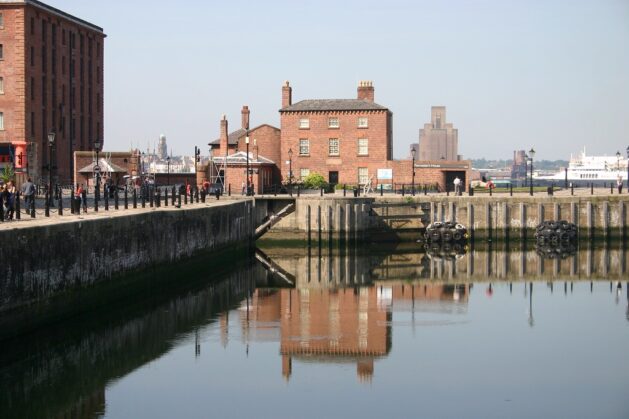
Piermasters House is among small buildings being considered for social and commercial uses. c.National Museums Liverpool
The brief
- Redevelopment of Dr Martin Luther King Jr Building, formerly the Dock Traffic Office and once Granada TV offices, facing entrance to Royal Albert Dock. To include an extension of and new entrance to the International Slavery Museum currently next door on the third floor of Merseyside Maritime Museum
- “Breathe new life” into the 18th century now underutilised dry docks once used for fitting out, cleaning and repairing ships, including those used in the transatlantic slave trade, central to Liverpool’s economy at the time. These dry docks are now some of the most historically significant maritime structures in the world
- New public spaces at Canning Dock, as well as new pedestrian bridges to improve accessibility, “bringing forward innovative and creative solutions that will raise the profile of the area whilst responding to the history of the site and creating one seamless experience linking past with present”
- Multiple smaller buildings that are not fully used including the Cooperage, Mermaid House, Pilotage building, Piermaster’s House and Great Western Railway Building represent commercial and cultural opportunities for NML as part of its sustainability planning in order to generate more revenue streams.
A primary focus of the transformation is to respond to the waterfront’s history, and looking at ways to bring the history of the transatlantic slave trade more into the public realm and ensuring Liverpool’s black communities are engaged and represented throughout, NML said.
The Canning Dock competition, managed by Colander Associates, is supported by £120,000 of funding from the Liverpool City Region Combined Authority as part of their Race Equality Programme.
Words from the winners
Asif Khan – leads a London-based architecture studio designing buildings, landscapes, exhibitions, and installations internationally. Khan’s current projects include the New Museum of London, the public realm for Dubai Expo 2020, and the Tselinny Centre for Contemporary Culture in Almaty.
“For National Museums Liverpool, we have formed a different kind of design team. Not simply to deliver a project, but to steward a significantly meaningful one into being.
“This new piece of history will welcome voices from across Liverpool and globally from the places and people connected with Canning Dock.”
Sir David Adjaye – a Ghanaian-British architect who founded Adjaye Associates in 2002. The company operates globally, with studios in Accra, London, and New York.
“Our collaborative team composed of technical architects, planetary architects and an artist envisions the NML Waterfront Transformation as an opportunity to powerfully reformulate the history of Liverpool through re-invigorating the diverse social, civic and environmental context of the city.
“Recognising the history of the surrounding waterfront, connecting the region’s cultural infrastructure, and creating a space in which the public realm and public arts can connect, holds the potential to create a distinct, engaging, and empowering identity for the community to grow with and in.”
Mariam Kamara – a Nigerien architect who founded atelier masōmī in 2014. The firm tackles public, cultural, residential, commercial and urban design projects.
“The Canning Dock transformation is a chance to explore the power of architecture as a storytelling tool to bridge the gaps in knowledge that exist about the history of Liverpool as well as this significant site.
“The NML Waterfront Transformation is an opportunity to pull on the threads that make up the history of the transatlantic slave trade – from Africa, across the Atlantic to the US and back to Liverpool – to bridge gaps, to exhume memories and ultimately bring to the fore an exciting space for the public to explore and engage with the history of Liverpool while firmly facing towards the future.”
Theaster Gates – artist and social innovator who lives and works in Chicago. In 2010, Gates created the Rebuild Foundation, a non-profit platform for art, cultural development, and neighbourhood transformation that supports artists and strengthens communities through free arts programming and innovative cultural amenities on Chicago’s South Side.
“Commemoration and memorial making are some of the most important acts a nation can be involved in, especially commemoration around racial complexity and social ill.
“We hope that by using the tools of monument making and memorialising and commemoration, we will be able to do what many have not been able to do, which is to give emotional heft to the truth of slavery in the UK historically.”


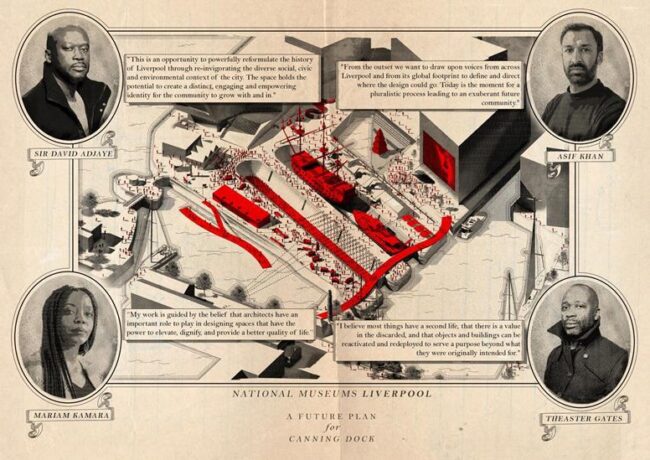
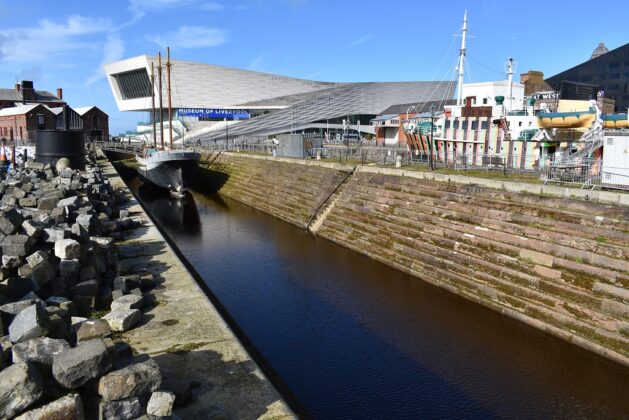
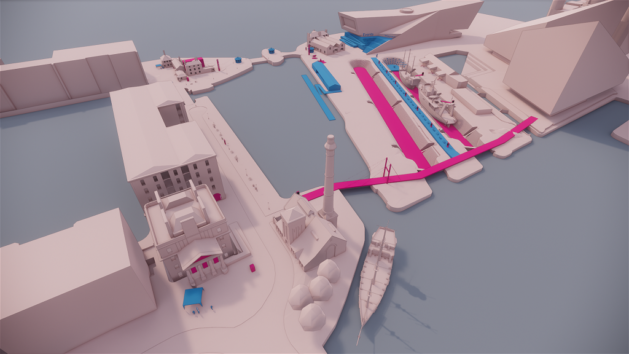

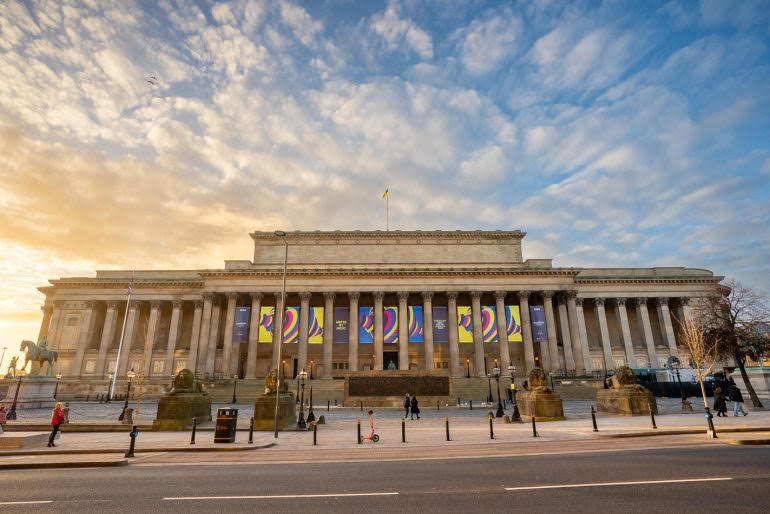
Sounds a fantastic team to take Liverpool forward to the forefront once again which it has been lacking over recent years. Welcome to Liverpool
By Norman
All sounds very good…can’t see the expected timescale?
By George
Awesome team!
By Clark
Let’s hope this doesn’t *just* focus on the links to transatlantic slavery when some ships involved in that shameful period used the dock, among other ships.
There is a lot lot more to the area’s history than this. A difficult balance to strike, but an important one if the project is to properly reflect the dock’s history and engage with the public
By Balance